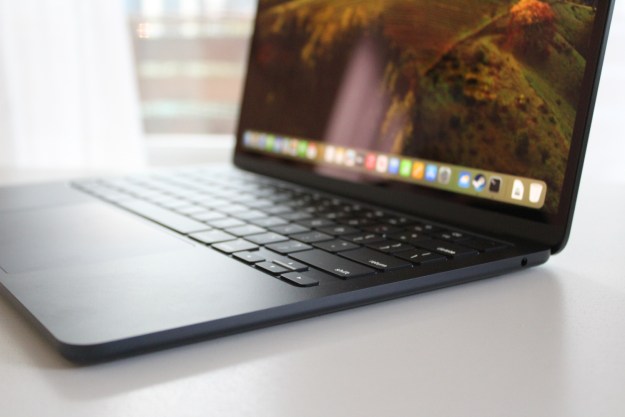The original 12-inch MacBook was one of the most experimental Mac computers ever made. It was also the lowest-selling MacBook in the past five years, and eventually was discontinued altogether in 2019.
But the latest reports have indicated that Apple isn’t done with the 12-inch MacBook. The laptop is rumored to be relaunching later this fall as one of the very first Apple Silicon-powered Macs. But with the product’s rocky legacy, Apple may need more than just a new processor to fix its issues.
The return of the butterfly

The 12-inch MacBook introduced a number of controversial design choices, but none as despised as the butterfly mechanism keyboard. Typing with the super-shallow key travel was loud and tiresome, but the reliability of the keyboard was the real issue. As it turns out, the butterfly keyboard was prone to failures and sticky keys — and was extremely difficult to repair.
Lawsuits were filed, complaints filled the halls of the internet, and Apple eventually retired the keyboard technology. Despite two additional iterations of the keyboard, the MacBook Air and MacBook Pro reverted back to a traditional scissor-switch keyboard.
But a new report claims a fourth-generation butterfly keyboard will launch on this new 12-inch MacBook. If this turns out to be true, Apple is facing an uphill battle. The company’s previous attempts at “fixing” this keyboard have consisted of installing rubber domes under the keycaps to stabilize the key and prevent dust from slipping under.
Apple needs to overcome the poor public perception of the butterfly keyboard, and it won’t be easy.
The biggest issue with the butterfly keyboard was always the lack of purpose. The MacBook felt astoundingly thin for its time at 0.52 inches, but there are now thinner laptops out there with longer travel. Once Apple started putting the butterfly keyboard on laptops like the 15-inch MacBook Pro, it really stopped feeling practical.
If Apple wants to overcome poor public perception of the butterfly keyboard, it’ll need to do some extra work to prove its reliability has drastically improved. If that means addressing the complaints and problems directly, so be it. Apple will also need to demonstrate the benefits of the butterfly keyboard in the design. There haven’t been any rumors about the thickness of this next-generation MacBook, but it’ll reportedly weigh under 2.2 pounds. That’s a good start, but there needs to be more proof that the trade-off will truly be worth it.
One port too few

Apple is no stranger to controversies over ports. But a laptop with just a single Thunderbolt 3 port and a headphone jack? It was a scandalous idea — and one that didn’t sit well with reviewers and Apple enthusiasts in 2015. Much like the butterfly keyboard, one port for everything felt like a limitation for limitation’s sake, with little benefit for the user.
But in the past few years, limiting ports to USB-C has become a popular idea. It spread its way to the MacBook Air and MacBook Pro, and even to Windows laptops like the XPS 13. Dongles, adapters, and docks have become the norm, and there are some new laptops that are even cutting headphones jacks. Thunderbolt 3 technology is powerful and adaptable, and the upcoming launch of Thunderbolt 4 will only extend its features.
Still, the 12-inch MacBook remains the one laptop that dared to keep it to one. Recent reports say that Apple is sticking to its guns and keeping the single port around. It might feel like a hard pill to swallow, especially since it’s hard to explain why you couldn’t easily include a second Thunderbolt port on the opposite side.
Let’s just hope Apple didn’t decide now was the right time to finally remove the headphone jack from the Mac.
No one wants a slow laptop

Performance was the last big issue with the 12-inch MacBook. These laptops were completely fanless, and that meant Apple was restricted to Intel’s lower-powered Core m3 chips. These were dual-core processors with just a 4.5-watt TDP, meaning performance was limited. It could handle surfing the web just fine, but this was far from a workhorse laptop.
This is the one area Apple should easily be able to improve the perception of the MacBook. Apple has far more experience than Intel working with fanless, power-restricted products, thanks to devices like the iPhone and Apple Watch. I don’t have many concerns about Apple’s ability to improve the performance here.
Price is the other major ace Apple is reported to have up its sleeve. The next-generation MacBook is said to start at just $750, a huge discount from the original $1,299 of the original. It’s even cheaper than the current MacBook Air, which starts at $999 (or $899 for students).
Apple has never sold a MacBook for that cheap, and that’ll give it a built-in audience. All is forgivable if Apple is really able to get the price down that low. Maybe we’ll get lucky during Black Friday with the MacBook deals.
Editors' Recommendations
- These 6 tweaks take MacBooks from great to nearly perfect
- If you buy one MacBook Air alternative, make it this one
- The case for buying the M2 MacBook Air over the M3 model
- Which color MacBook should you buy? Here’s how to pick
- Why you should buy a MacBook Air instead of a MacBook Pro


